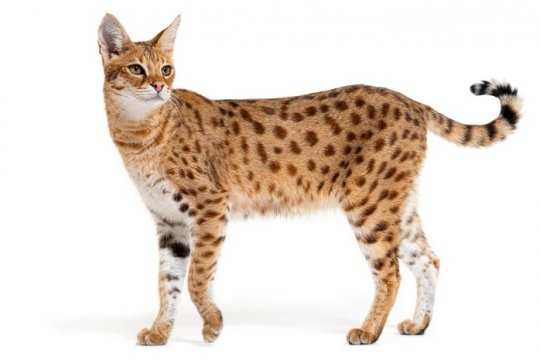Your Cart Is Empty
✖No products in the cart.

United States
10"- 13"
9-15 pounds
12-15 years
Confident, friendly, intelligent, active
Large-sized short-haired
$1,500 - $25,000 (depending on generation)
The price of Savannah kittens is generally lower for generations that are farther removed from the African serval. The most expensive is an F1 Savannah (first generation), which might cost $10,000 to $18,000. A pet-quality Savannah kitten in the F4 to F7 generations usually costs anywhere from $1,500 to $3,500. Show-quality kittens in these later generations often cost $2,000 to $4,000.
Pedigreed cats like the Savannah are more expensive than non-pedigreed cats because reputable breeders spend a lot of time and money on their breeding programs to ensure their adult breeding cats are healthy, temperamentally sound, and good representations of the breed. They also spend a lot of time and money raising the kittens to get them ready to go to their new homes. Savannah cats in particular are among the most expensive of all purebred cats. This is because Savannah breeding programs involve small a wildcat species called the African serval, which are expensive to purchase, feed, and house.
Savannah cats are curious, intelligent, friendly, and affectionate. They bond closely with their human family and like respectful kids, though the Savannah Cat Association recommends that Savannahs that will live with young children should be later generation (F3 and higher). This breed is one of the most active and curious breeds, so you must be prepared to provide enough exercise, play, and mental stimulation. Without it, a Savannah will make their own entertainment and can become destructive in the house.
All Savannah cats are individuals, and some might enjoy cuddling more than others. In general, Savannahs are known to friendly and affectionate, and they bond closely with family, so cuddles are not unexpected. However, the Savannah’s high activity levels mean that any cuddles might be short-lived.
Amidst the realm of feline diversity, reside the distinct breeds that captivate our attention. Feline inhabitants create a harmonious symphony of fur, whiskers, and personalities that enrich our lives
© 2024 CATLIVES. All Rights Reserved.